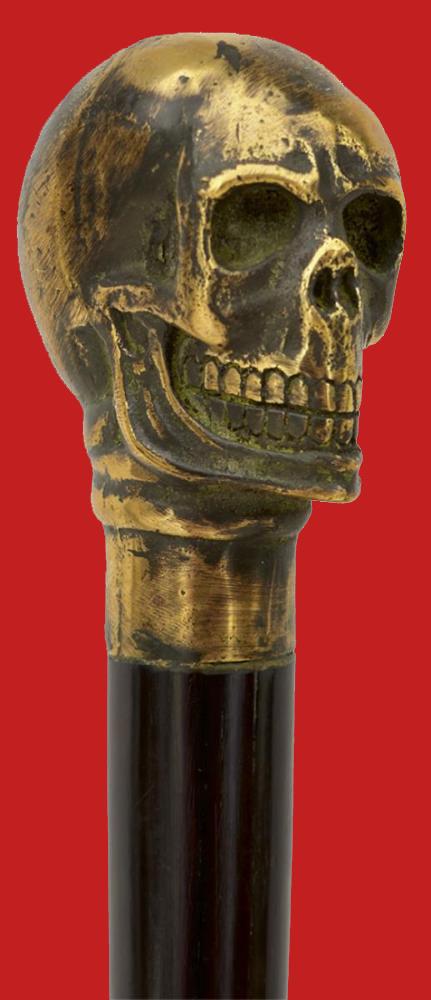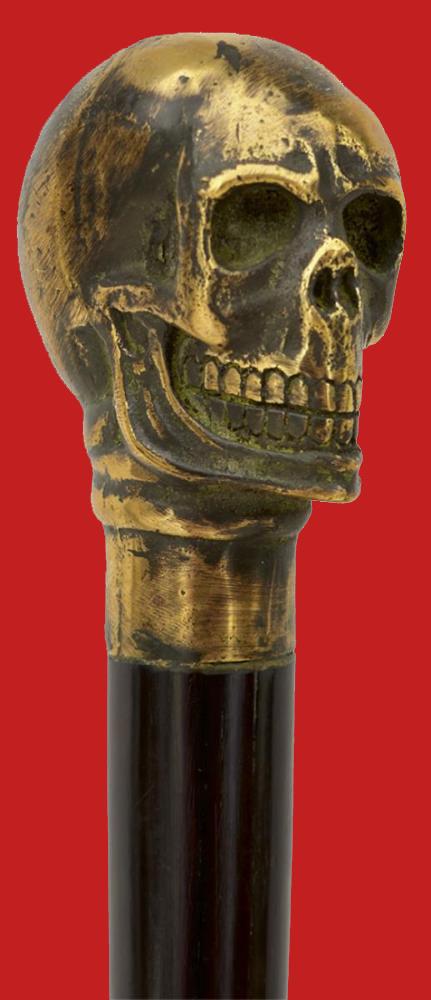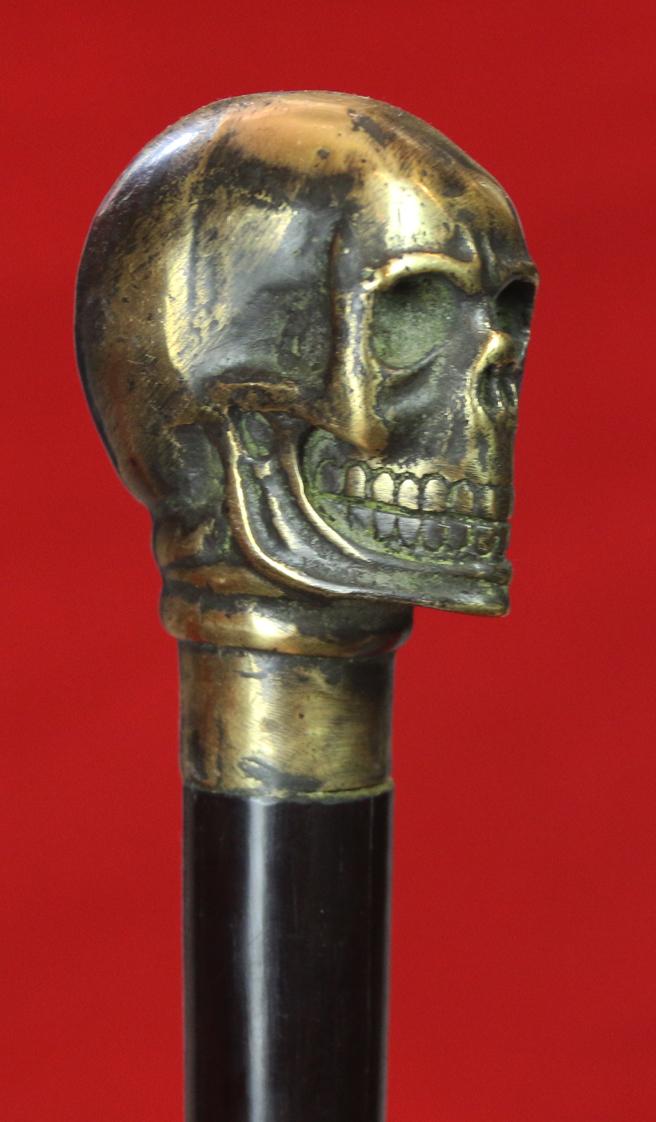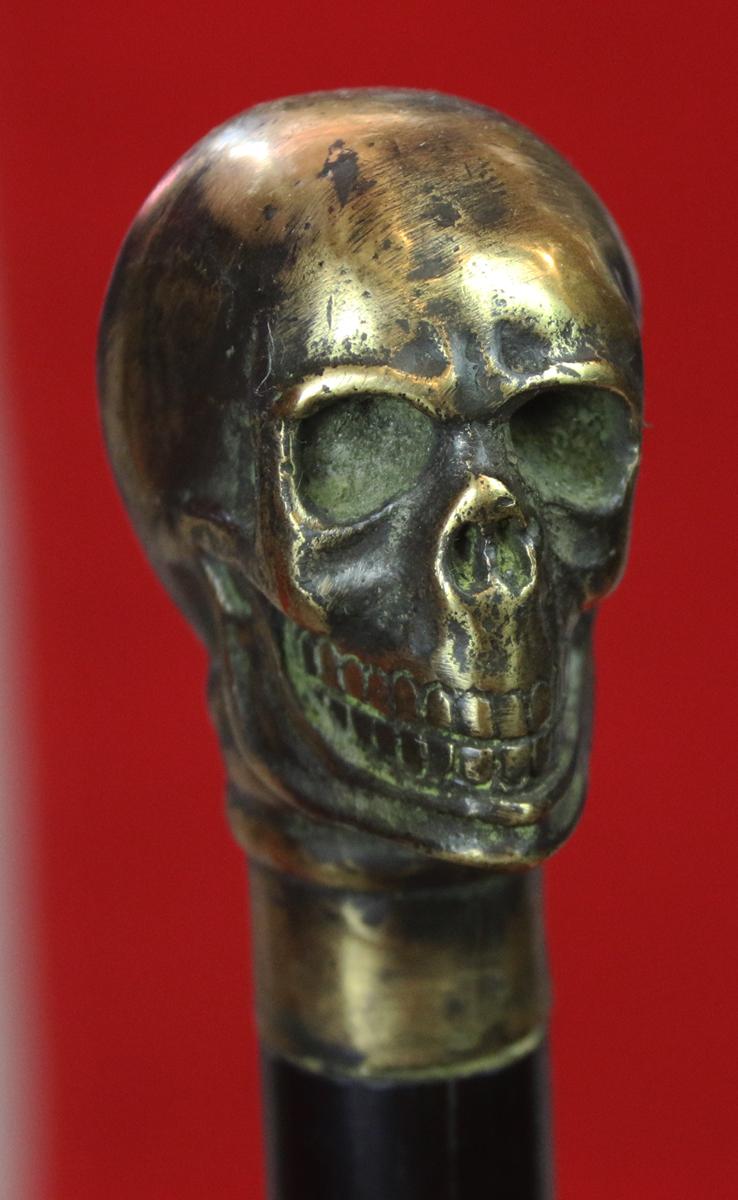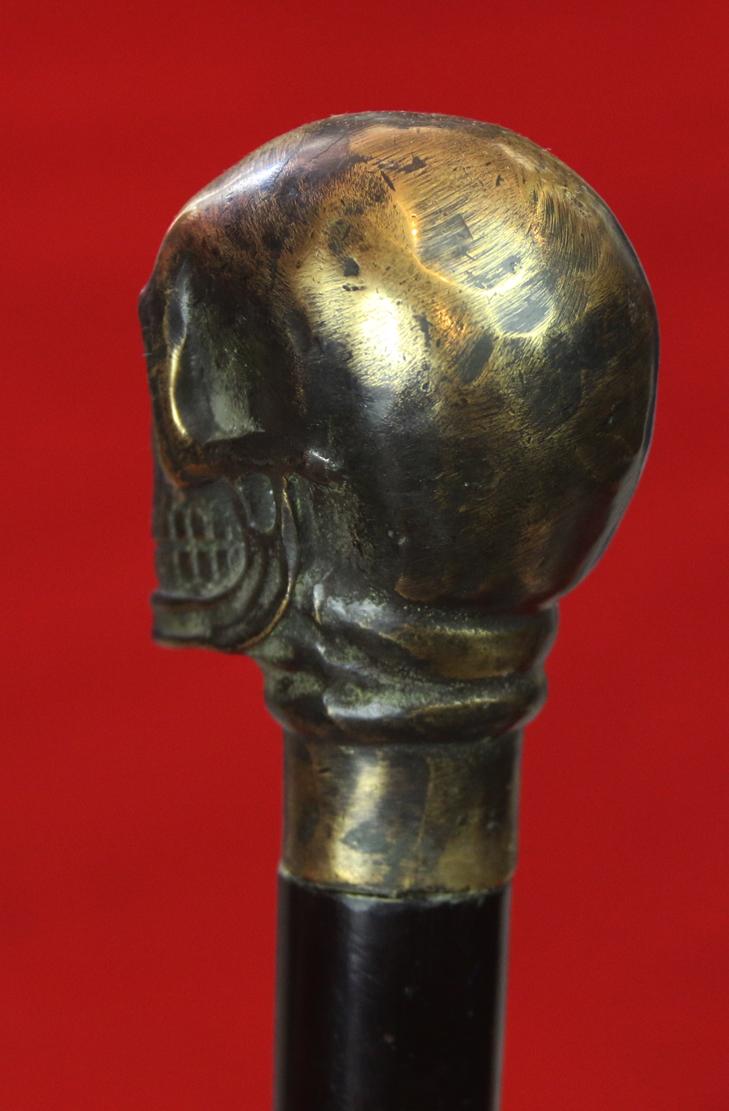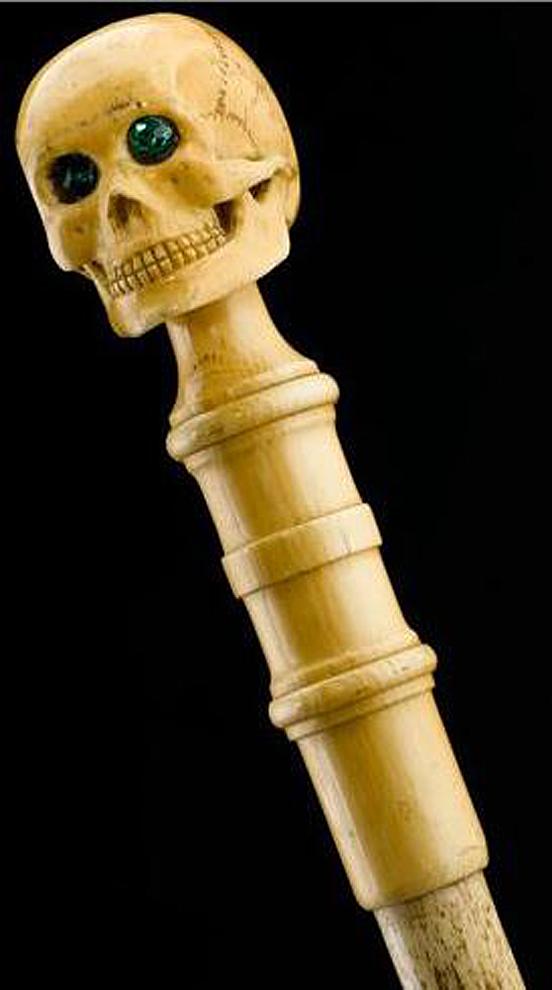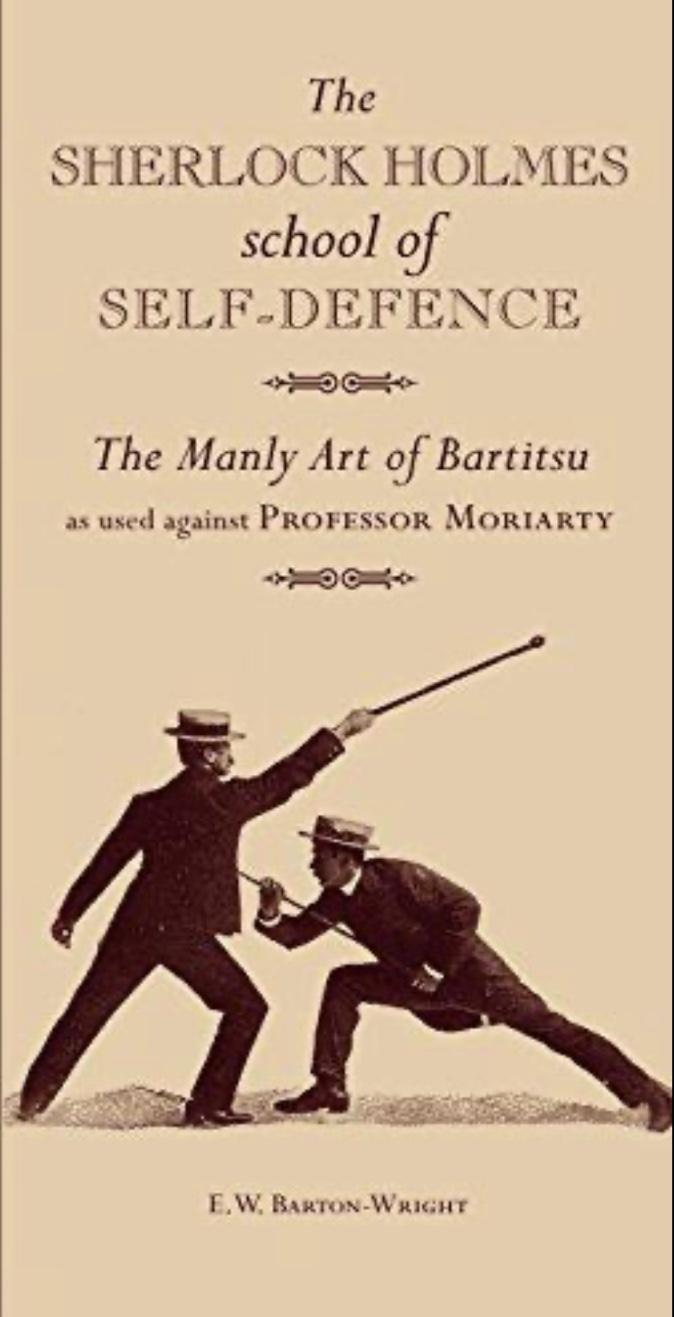An Imposing & Elegant ‘Morituri’ Walking Cane Combination ‘Bartitsu’ Club Stick, Cast Bronze Skull With & Sophisticated Ebony Stick & Carved Bone Ferrul. Once A Most Essential Accessory For the Gentleman About Town.
Likely 20th century, post Victorian.. A gentleman’s walking out club cane of the most distinct esoteric style of a weighted cast skull set upon an elegant, earlier, Victorian ebony cane with a carved bone ferrule.
Skull mounted canes for gentlemen have been most popular in all forms since the 18th century, and one of the most famed was the cane made for, and used by, Charles Darwin.
Darwin called his skull stick his ‘morituri’, a type of ‘memento mori’. These objects remind their owners of the short time people live on earth. Charles Darwin (1809-82) is famous for his theory of evolution outlined in The Origin of Species, first published in 1859. Darwin’s walking stick was collected by Henry Wellcome as a relic of someone Wellcome considered a ‘great man.’ Darwin's carved whalebone Morituri cane is shown in the gallery on a black ground.
Walking canes have been in use for centuries and have come to represent both elegance and practicality. A sophisticated walking cane in particular, is more than just a tool to aid in walking it is a statement of style, sophistication, and grace. The concept of a gentleman’s elegant walking cane, its history, and its contemporary significance, is intriguing, and furthermore, a night walking gentleman once trained in the art of the ‘fighting stick’, most elegantly detailed in the Sherlock Holmes novels by famed Victorian and Edwardian Sir Arthur Conan Doyle, could a most effective adversary, with his defensive accessory, ready to counter the prowling Victorian ne’er do well or assassin on the streets of London after dark {just like London is now, apparently, but long before dark}
A brief history of walking canes
Walking canes have been in use since ancient times, with evidence of their use found in several civilizations around the world. The Egyptians, Greeks, and Romans all used walking sticks for both functional and ceremonial purposes. In medieval times, walking canes were an accessory of the wealthy and powerful, often adorned with precious metals and jewels.
By the 17th century, walking canes had become an essential part of men's fashion. They were not only used as a symbol of wealth and status but also as a practical tool to aid in walking. During the 18th century, walking canes became even more ornate, with intricate designs and carvings, and the addition of handles made from exotic materials such as ivory and tortoiseshell.
In the 19th century, walking canes became more utilitarian in nature, with the introduction of collapsible canes and adjustable handles. They continued to be popular among the wealthy, with some canes serving as a form of self-defense, in the lawless cities, fitted with sword or dagger blades. And a substantial cane often made a most effective 'club' stick, although never designed as such of course, but necessity has always been the mother of invention.
Bartitsu is an eclectic martial art and self-defence method originally developed in England in 1898–1902, combining elements of boxing, jujitsu, cane-fighting, and French kickboxing (savate). In 1903, it was immortalised (as "baritsu") by Sir Arthur Conan Doyle, author of the Sherlock Holmes mystery stories.
The stick fighting component was based on the two fundamental tactics of either feinting/striking pre-emptively or "baiting" the opponent's strike via a position of invitation. Fighting from the style's characteristic high- and double-handed guard positions - assumed so as to make it more difficult for an opponent to "snipe" the weapon-wielding hand - stick strikes and thrusts targeted the opponent's face and head, throat, elbows, hands and wrists, solar plexus, knees and shins. The Bartitsu stick fighter would often incorporate close combat techniques such as trips, throws and takedowns, representing a fusion of the Vigny stick system with jujutsu, which was unique to Bartitsu as a system.
A most beautiful yet intriguing collectors item.
90cm long
Code: 24855
545.00 GBP


